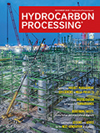November 2024
Special Focus—Process Controls, Instrumentation and Automation
The use of AI in process plant control: A proof of concept
The goal of this article is to highlight how: Supervised machine-learning and the Internet of Things can be used to develop a soft sensor that can enable the plant operator to continuously monitor product analysis, as well as gain insights into the root cause of off-spec product—in this work, the off-spec product is distillate. Also, this article will show how reinforcement learning can be used to train an AI agent to operate the plant.
This is a preview of our premium content. Thank you for your interest—please log in or subscribe to read the full article.







Comments